SUMMARY
- Debut
1) The law of charity, spread in the hearts of the Faithful through the Holy Spirit, has united the nations of the whole world with a bond of brotherhood. By this spirit of love the face of the earth has been truly renewed. By virtue of this spirit, mankind has begun to transform this valley of tears into an occasion for the exercise of charity and into an abode of pilgrimage towards beatitude, and human infirmities, already inherent in the members of the same body, offer to the patients a motive for the expiation of sins and the conquest of eternal health, while those who associate themselves with their sufferings are given the increase of merits with the confidence of obtaining for themselves the mercy they have granted to others.
2) Blessed Camillus, filled with this spirit from heaven, took upon himself the caring care of all the afflicted, especially the sick, and spread the spirit of his fervour to others.
3) This Blessed Man, who exercised the virtues to a heroic degree, and whose sanctity was magnified by Almighty God with miracles, we, from the chair of truth, propose that he should be venerated by the whole Church, invoked by the peoples, imitated by all the Faithful, and we attest to this by the contents of this document.
- Description of the life of St. Camillus
1) Birth and youth
Camillus was born in Bucchianico in the year 1550, not without omens of future sanctity,
to which, however, in his youth, dedicated to vices and in particular to gambling
gambling, he did not correspond in the slightest. But God called him back from the path of perdition to the path of salvation.
2) Conversion and the beginning of a holier life
With an ardent act of repentance, Camillus detests the errors of his previous life and resolves to irrevocably preserve for the future the grace of justification given to him by the Lord. Twice, therefore, the Superiors of the Order of Capuchin Friars were forced despite themselves to dismiss him from their community. Then Camillus took to devoting himself totally to the care of the sick and their needs in the Hospital of St James of the ‘Incurables’.
3) Foundation of the Order of Clerics Regular of the Ministers of the Infirm
- a) Camillus gathered the most fervent workers of that hospital and other pious believers and thus founded a Company, then of laymen, who, exercising charity towards the sick for the love of God and rushing to the aid of the sick poor both in hospitals and in private homes, constituted an incredible utility for the whole city.
- b) Many clergymen joined Camillus. The latter also assumed the order of the sacred presbyterate, and therefore with his Companions began to provide individual sick people with the comfort of both spiritual and corporal life.
- c) To this Company of men who lived without vows Pope Sixtus IV, on 18 March 1586, granted the decree of approval under the name of ‘Congregation of the Ministers of the Infirm’, and endowed it with various privileges, among which was the faculty for the Members to wear, as a distinctive sign of their habit, a cross of tawny red colon sewn on the right side of their robes.
- d) In the year 1591, Gregory XIV elevated this Congregation to the status of a Regular Order under the name of ‘Clerics Regular Ministers of the Infirm’, granting the members the authority to take solemn religious vows and placing the Order under the immediate and special protection of the Holy See, endowing it with very extensive privileges.
- The virtues of the Founder St. Camillus, first of all charity
Camillus observed all the laws of Christian perfection, especially that of charity, whose sublimity, depth, breadth and perseverance can be described as follows:
1) Sublimity: Charity was understood by Camillus as proceeding from God and referring to God himself, and at the same time made him interpret all things in creation as a motive for piety towards the Lord or as an opportunity to exercise mercy towards one’s neighbour.
2) Depth: Camillus willingly fixed his eyes on the depths of his own humility, from which source emanated assiduous exercises of penance and mortification, especially that resigned mental attitude by which he unceasingly assisted and served the poor and the sick, whom he brought near in the Lord, sustaining all the humblest and most tiring offices.
3) Broadness: Camillus bestowed the fruits of his charity on all people in tribulation and distress:
- a) to all: that is, to the poor, to maidens, to widows, to children; and above all
- b) to the sick: of all kinds and wherever they may be;
-particularly in the hospital of Santo Spirito in Saxia;
-even in times of plague;
– and during floods, with the greatest danger to his life;
- c) not only in Urbe, but also in other cities, such as Milan, Nola, Bucchianico and throughout Italy.
4) Perseverance: Camillus persevered in this exercise of charity until his death (14 July 1614).
- The canonical processes of beatification and canonisation
1) Camillus died in the reputation of sanctity. Immediately after his passing, regular processes were instituted, first by Ordinary authority and then by Apostolic authority, and on 24 July 1728 the Decree on his heroic virtues was issued.
2) Among the nine miracles produced, two were approved on126 September 1741.
3) The Decree of Beatification was published on 2 February 1742.
4) Other miracles were recognised on 11 May 1745.
5) On 17 August 1745, the Decree was issued concerning the whole process leading up to the canonisation.
6) Wishes, prayers and supplications for the fulfilment of this Decree.
7) On 18 April 1746 there was a secret Consistory.
8) Public Consistory, in which the deeds, virtues and miracles of Blessed Camillus were exposed.
9) On 10 June of the same year, a semi-public Consistory was held, in which the question of whether a solemn canonisation should take place was proposed, and prayers were raised that God would enlighten the Pontiff’s mind.
- Canonisation of Blessed Camillus
On 29 June 1746, the Supreme Pontiff went in procession to the Sacred Memory of the Blessed Prince of the Apostles and – once again addressing prayers to the same – proclaimed Camillus de Lellis to be solemnly called a saint and granted an indulgence to the faithful who on 14 July devoutly visited the church of St Mary Magdalene, where the body of the new saint is kept. Finally, the Supreme Pontiff celebrated Mass at the Altar of St. Peter the Apostle.
- Epilogue of the Bull
Let the Church rejoice! May the faithful be incited to follow in the preclinary footsteps of this Saint!
- Clauses, date and signatures
Authority is given to the copies of this letter. Sanctions. Signed by the Supreme Pontiff and thirty-seven Most Eminent Cardinals.



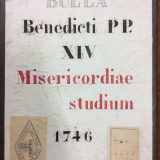
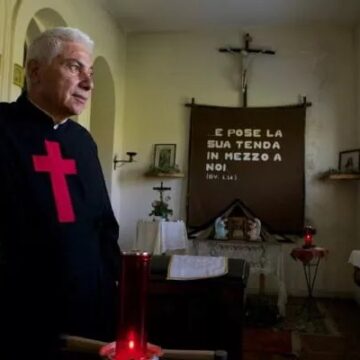

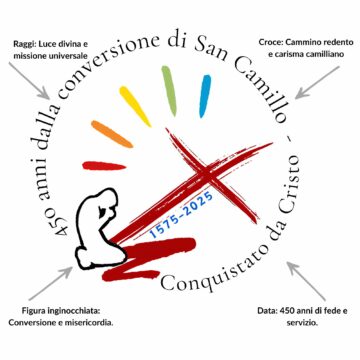


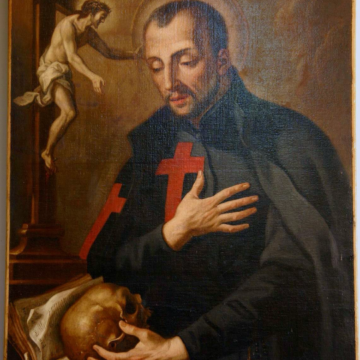
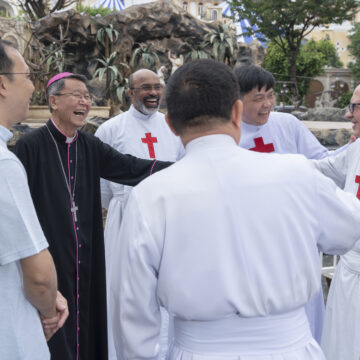

Camillians on Facebook
Camillians on Twitter
Camillians on Instagram